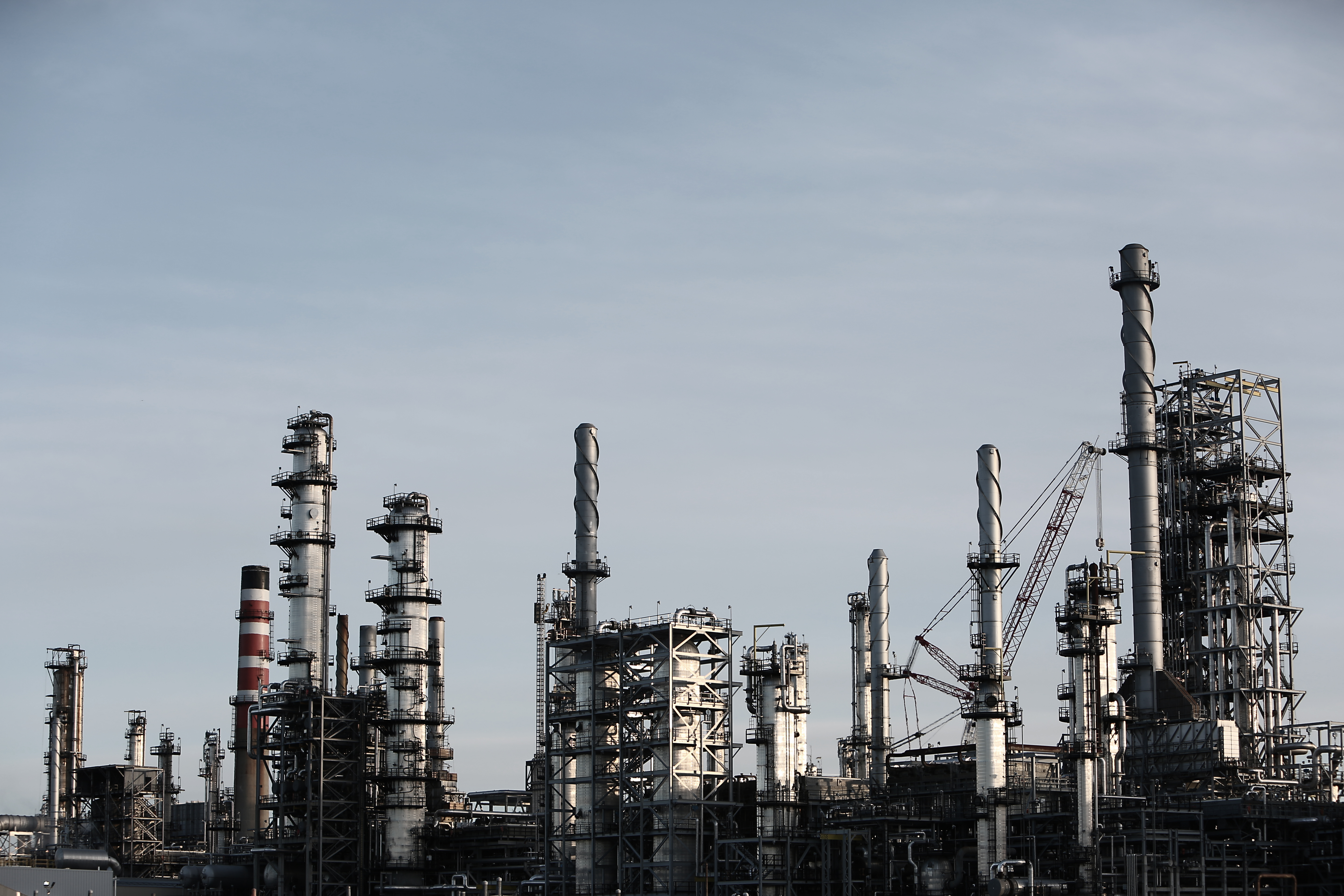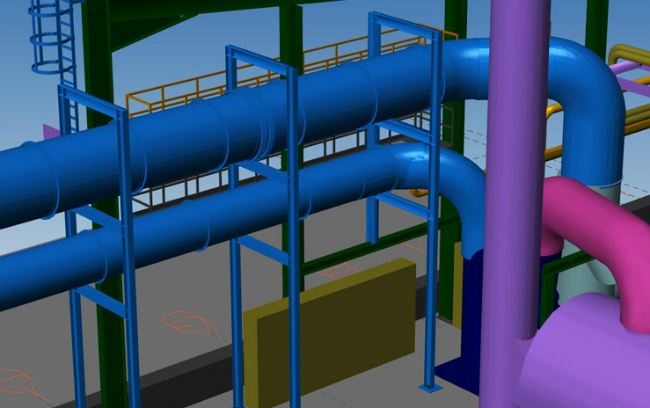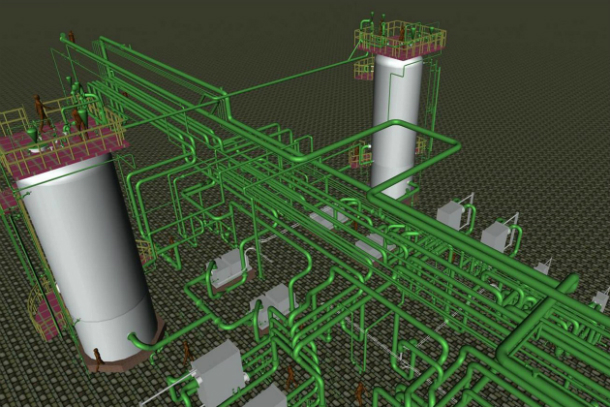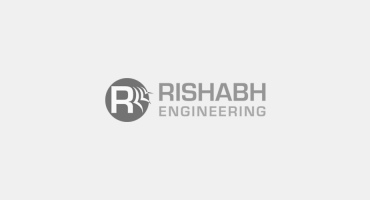
Piping Design Codes, Standards & Best Practices For Refineries
Piping design and flexibility analysis are an important aspect of engineering. The advent of computing software has transformed the way piping design is facilitated today. Engineers now utilize a wide range of tools and software that aid in the process of modern piping design. However, there are multiple aspects a piping design engineer needs to consider when designing the piping systems.
One of the primary aspects is to conform to the piping design standards and codes. Piping systems are designed in line with industry codes and standards. These standards are set by the professional societies, committees and trade organizations. Each code is basically a standard created by the same organization or committee that developed the standards which are then accepted by the government.
Process plants comprise all kinds of facilities involved in the chemical/physical processing of raw materials to the desired end products. Refineries have some of the largest process plants where plant design and piping engineering play an important role in the successful and safe construction of the facility. Accurate planning and execution of the design and pipe routing also makes a big difference on controlling the total installed cost (TIC).
The main purpose of a code is to ensure the personal and industrial safety of a plant or equipment. It is necessary for a piping design engineer to thoroughly understand the industry codes and standards as well as the components and materials used in piping systems. The knowledge of industry codes and standards helps in the selection of appropriate piping material and develop the material specifications with precision. Moreover, it ensures the integrity of the piping design when processed for construction and system maintenance.
Designing Piping Layout in accordance with the standardization further aids in avoiding any differences in the piping systems, components, and procedures while reducing overall costs, inconvenience and confusion. The organizations that developed the standards also develop recommended practices which are adopted as best engineering practices industry-wide when designing the piping systems.
Piping System Design Code:
A code is a set of specific rules or systematic procedures developed by an organization for design, fabrication, installation, testing and inspection of pipes or piping systems. It isn’t a law but created in a way that the legal jurisdiction can adopt it and convert it into a law.
The code that governs the design of piping systems for process plants is ASME B31.3: Process Piping. Piping engineers are responsible for interpreting the code using sound engineering judgment to ensure that the proposed design meets the code requirements.
Piping Design Codes most widely applicable to Refineries:
B31.3 Process Piping:
Once called the Chemical Plant and Petroleum Refinery Piping Code, this code has a broad coverage. Because the B31.3 covers such a wide gamut, it has several “fluid categories” to assure the proper degree of rigor is assigned to various types of piping.
It is applicable for the design of chemical and petroleum plants and refineries processing chemicals and hydrocarbons, water and steam. This Code contains the statutes for piping elements typically found in petroleum refineries; chemical, pharmaceutical, textile, paper, semiconductor, and cryogenic plants; and related processing plants and terminals.
This Code prescribes requirements for materials and components, design, fabrication, assembly, erection, examination, inspection, and testing of piping. This Code applies to piping for all fluids including:
- Raw, intermediate, and finished chemicals
- Petroleum products
- Gas, steam, air and water
- Fluidized solids
- Refrigerants
- Cryogenic fluids
B31.4 – 2002 – Pipeline Transportation Systems for Liquid Hydrocarbons and Other Liquids:
This code dictates requirements for the design, materials, construction, assembly, inspection, and testing of piping that transports liquids. The kind of liquids include: crude oil, condensate, natural gasoline, natural gas liquids, liquefied petroleum gas, carbon dioxide, liquid alcohol, liquid anhydrous ammonia and liquid petroleum products.
These are typically transported between producers’ lease facilities, tank farms, natural gas processing plants, refineries, stations, ammonia plants, terminals (marine, rail and truck) and other delivery and receiving points.
The piping used here typically consists of pipe, flanges, bolting, gaskets, valves, relief devices, fittings and the pressure containing parts of other piping components. It also includes hangers and supports, and other equipment items necessary to prevent over stressing the pressure containing parts. It does not include support structures such as frames of buildings, buildings stanchions or foundations.
B31.8 – 2003 – Gas Transmission and Distribution Piping Systems:
This Code covers the design, fabrication, installation, inspection, and testing of pipeline facilities used for the transportation of gas. This Code also covers safety aspects of the operation and maintenance of those facilities.
B31.8S-2001 – 2002 – Managing System Integrity of Gas Pipelines:
This Standard applies to on-shore pipeline systems constructed with ferrous materials and that transport gas. Pipeline system means all parts of physical facilities through which gas is transported, including pipe, valves, appurtenances attached to pipe, compressor units, metering stations, regulator stations, delivery stations, holders and fabricated assemblies.
The principles and processes embodied in integrity management are applicable to all pipeline systems. This Standard is specifically designed to provide the operator (as defined in section 13) with the information necessary to develop and implement an effective integrity management program utilizing proven industry practices and processes. The processes and approaches within this Standard are applicable to the entire pipeline system.
Piping Design Standards:
Standards are often developed by a professional organization, group or a committee. These are a set of documents that considered to be appropriate. Standards follow good manufacturing practice (GMP) which is mandatory for organizations undertaking piping systems design. The documents define the application design, construction rules, and necessary requirements for piping components like valves, flanges, elbows, tees, etc.

Recommended Practices:
Recommended practices, as mentioned before, are mostly developed by the same organization, group or committee that developed the standards. Unlike standards, these practices are optional. Also, these practices are a set of documents which are believed to be pertinent and a best engineering practice to implement especially for Refinery Piping Design.
Besides treating the codes and standards as mandatory regulations, many companies even consider them to be “design aids” as they are formulated by the industry experts. Pipe routing guidelines are criteria that optimize the overall piping cost and proper function. However, before implementing these codes and standards, it is important to know that every country has its own set of codes and standards to follow. American National Standard is the most commonly used standard though. There are other major country-specific standards highlighted in the table below:
| Sr.No. | Country | Abbreviation | Organization |
|---|---|---|---|
| 1 | American | ANSI | American National Standards Institute |
| 2 | Canada | SCC | Standard Council of Canada |
| 3 | France | AFNOR | Association Francaise |
| 4 | British | BSI | British Standards Institute |
| 5 | Europe | CEN | Association Francaise Committee of European Normalization |
| 6 | Germany | DIN | Deutsches Institute Fur Normung |
| 7 | Japan | JIS | Japanese Industrial Standards Committee |
| 8 | India | BIS | Bureau of Indian Standards |
| 9 | World Wide | ISO | International Organization for Standards |
Designing pipe systems according to above-mentioned codes and standards can reduce your designing costs significantly. If you have any queries regarding the Refinery Piping Specifications, share with us using the comment section below.
Here is one of the many projects that we have undertaken for Refinery Piping Detail Engineering.
Are you looking for an ideal partner providing piping design and engineering services for refineries?
We follow all the recommended codes, standards & best practices.
Call us now: 1-877-RISHABH (1-877-747-4224)
Or
Related Blogs
Related Blogs
Piping Support Design and Engineering
Pipe support design is an important component of piping engineering…
Detailed Engineering of Piping Systems
Detailed engineering involves design, detail, engineering and layout of piping…


